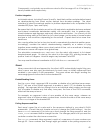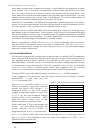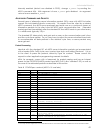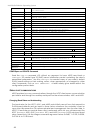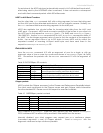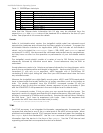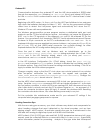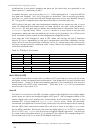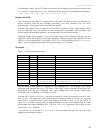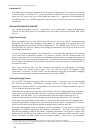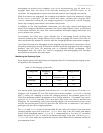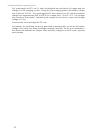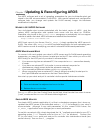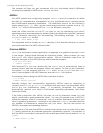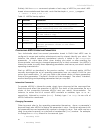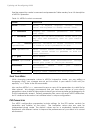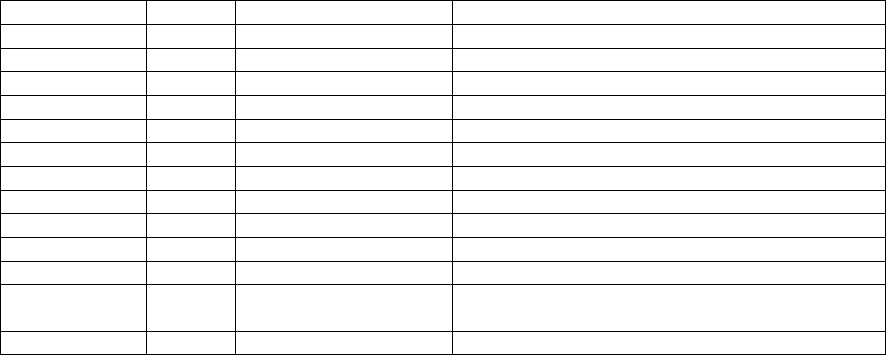
ActivMedia Robotics
For example, here’s the AROS client command to set digital output ports one and three
(OD1 and OD3), reset port four (OD4), and leave all the rest alone (hexadecimal notation):
0xFA, 0xFB, 0x06, 0x1E, 0x1B, 0x19, 0x09, 0x37, 0x24
Bumper and IR I/O
Two 10-position latching IDC connectors on the H8S controller provide 16 digital input
ports, normally used for the bumper accessory, but also available for your own
attachments. See Appendix A for connector details.
Similarly, the Motor-Power connector on the H8S controller contains eight digital inputs
that we normally use for IR sensors on the Performance PeopleBot and PowerBot, and
whose states are digitally mapped. See Appendix B for connector details.
Normally pulled high (digital 1), all the bumper and IR bit-mapped switches go low
(digital 0) when the respective port gets triggered. Bumper inputs also appear with the
stall bits in the standard SIP, but unlike in the IOpac, are modified by the InvertBumps
mask. All the bumper and IR data bits appear in the IOpac packet.
IO packets
Table 13. IOpac packet contents
LABEL BYTES CURRENT VALUE DESCRIPTION
HEADER 2 0xFA, 0xFB Common header
BYTE COUNT 1 22 Number of data bytes + 2
TYPE 1 0xF0 Packet type
N DIGIN 1 4 Number of digital input bytes
DIGIN 1 varies 0-255 ID0-8 bits mapped
FRONTBUMP* 1 varies 0-255 Front bumper bits mapped
REARBUMP* 1 varies 0-255 Rear bumper bits mapped
IR 1 varies 0-255 IR inputs
N DIGOUT 1 1 Number of digital output bytes
DIGOUT 1 varies 0-255 Digital output byte(s)
AN 1 5 Number of A/D values
A/D 10 5 integers
varying 0-2047
A/D ports 1-5 input values at 12-
bit resolution = 0-5 VDC
CHECKSUM 2 varies Computed checksum
Not all analog and digital I/O appears in the standard SIP. Accordingly, your client
software may request the IOpac SIP (type = 240; 0xF0), which contains all common I/O
associated with the H8S controller and which appear on the various connectors,
including User IO, General IO, Bumpers, and IRs.
Use the AROS client IOREQUEST command number 40 with an argument value of zero,
one, or two. The argument value one requests a single packet to be sent by the next
client-server communications cycle. The request argument value of two tells AROS to
send IOpac packets continuously, at approximately one per cycle depending on serial
port speed and other pending SIPs. Use the IOREQUEST argument value zero to stop
continuous IOpac packets.
* Actual bits, not affected by InvertBumps since bumper bits may be used for other
digital input besides bumpers.
49



